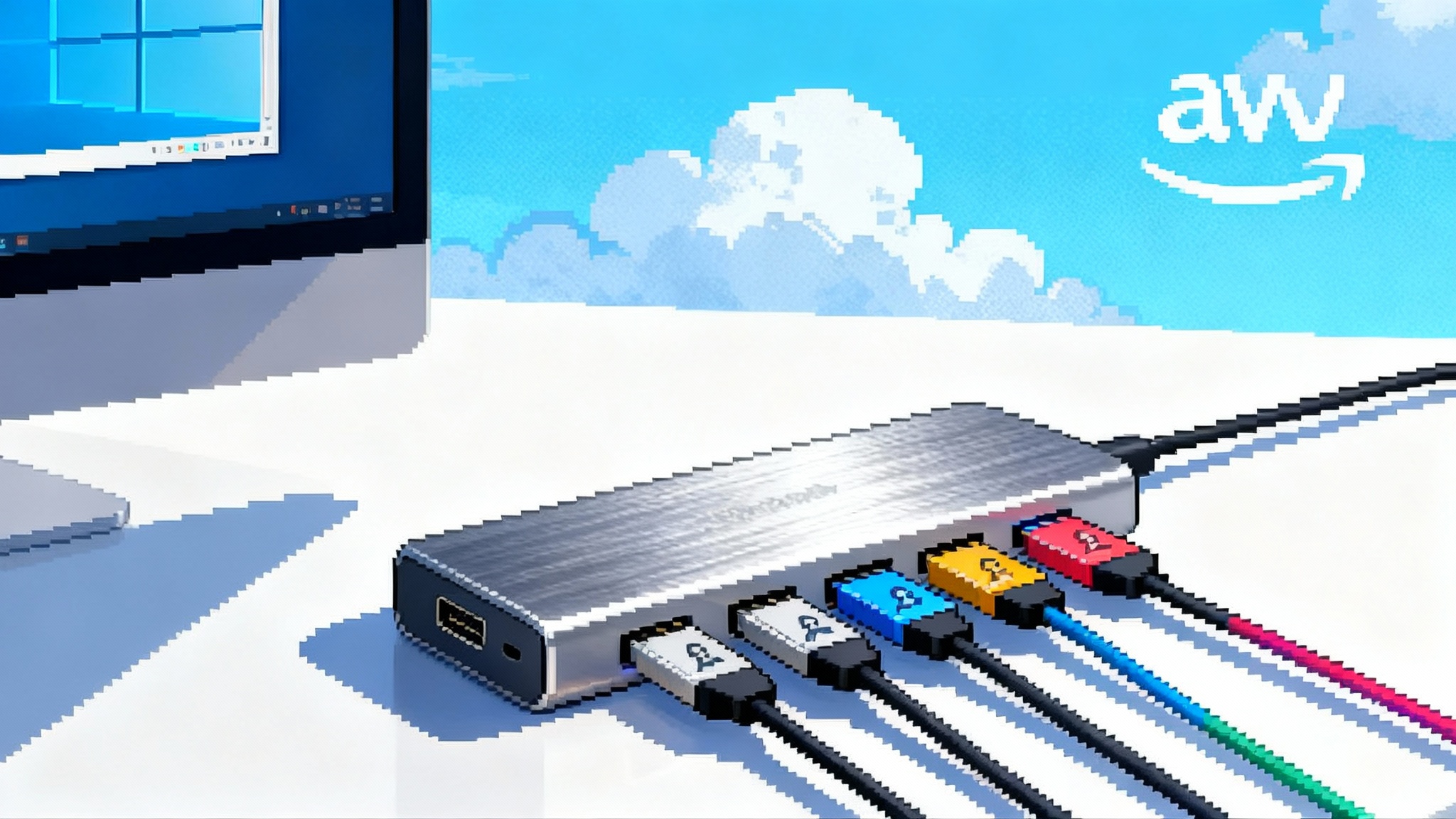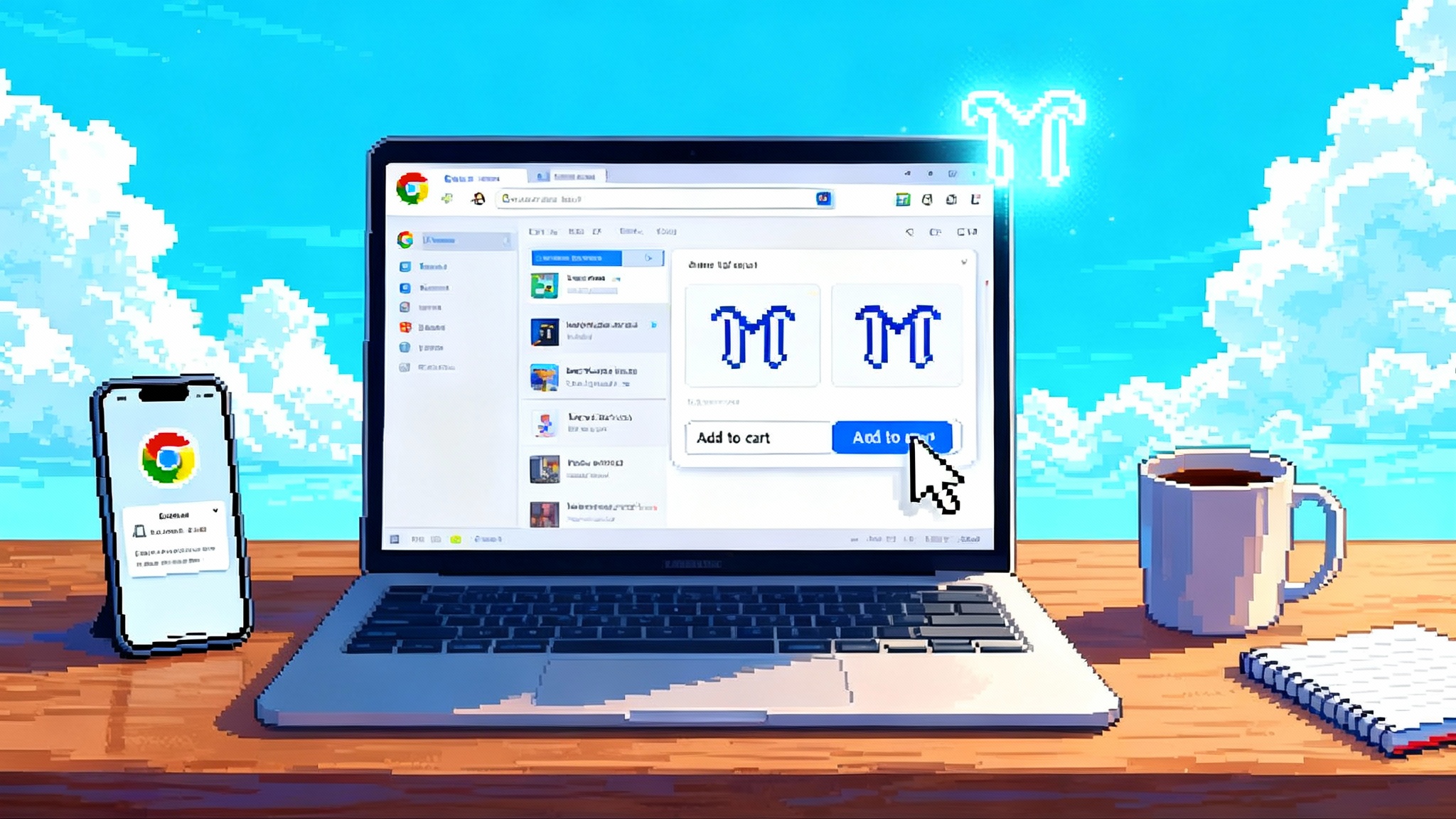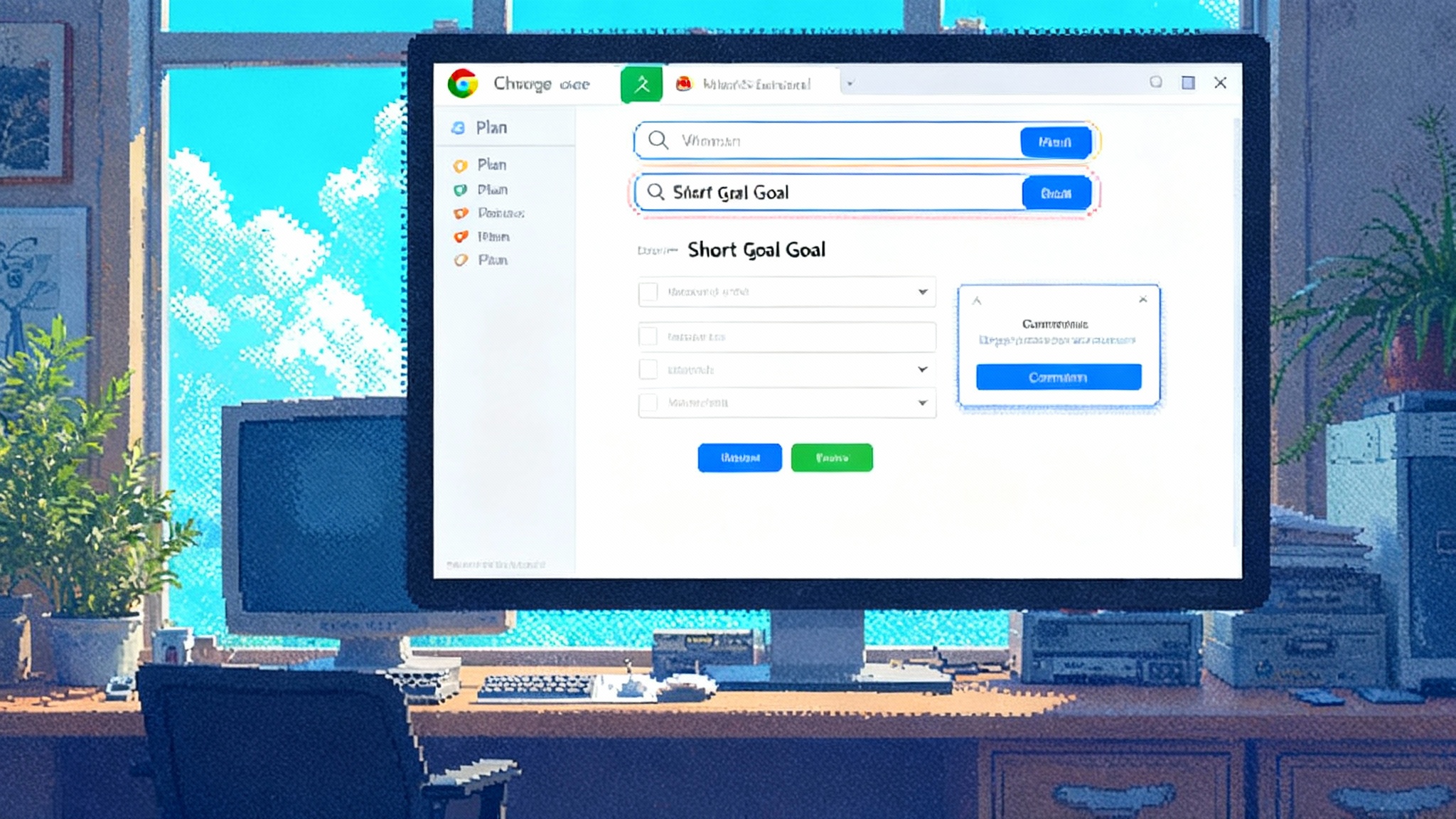MCP Crosses the Chasm: The USB‑C Standard for AI Agents
Three decisive moves from OpenAI, Microsoft, and AWS signal a tipping point for the Model Context Protocol. MCP is emerging as the default connector for agents to reach tools and data. Here is what changes and how to prepare now.

The connector moment for agents
Every platform era is defined by a connector that makes messy ecosystems feel simple. USB-C did it for hardware. OAuth did it for identity. Containers did it for deployment. Model Context Protocol, or MCP, is doing it for AI agents. It gives agents a clean way to discover, request, and use tools and data across networks without brittle, one-off integrations. Browsers are also turning into agent runtimes, as outlined in Gemini turns the browser into an agent runtime.
For months, MCP looked like an elegant idea hunting for its mass adoption moment. That moment has arrived. As of September 2025, major platforms are converging on MCP as the default way agents talk to everything else, from CRMs and code repos to spreadsheets and cloud services. The result is a new baseline for agent architecture, a new risk surface, and a clear roadmap for teams that want to ship useful automation rather than demo-only magic.
What changed this month
OpenAI announced full support for remote MCP servers inside its Responses API, making it first class to reach beyond the sandbox and into your systems via a standard protocol. You no longer bolt on custom HTTP calls or homegrown plugins. You register a server, expose capabilities, and let the agent negotiate access. Read their announcement on full support for remote MCP.
At Build, Microsoft pushed to wire MCP across Windows, Copilot Studio, and Azure AI Foundry so that workflows and enterprise data can flow through a consistent connector. On the commercial side, AWS Marketplace listings now highlight MCP and agent-to-agent compatibility, which reduces buyer friction and signals that vendors are expected to show up with an MCP surface, not a proprietary one.
One move matters. Three moves together change default behavior. The working assumption inside product and platform teams is shifting from "we will eventually support MCP" to "we start with MCP." That switch flips how you design agents, how you package capabilities, and how you certify risk.
MCP in plain English
MCP is a client-server protocol where the agent is the client and your systems sit behind one or more servers. Each MCP server advertises clear capabilities and resource handles. An agent connects, discovers those capabilities, requests access, and invokes them with structured inputs. Think of it as a typed, negotiated bridge between natural language and operational verbs like read, search, transform, write, schedule, and notify.
A few core ideas make MCP practical:
- Capability discovery: servers describe what they can do and under what constraints, so agents do not guess.
- Rich permissions: servers can declare read or write scopes and require consent before sensitive actions.
- Resources and tools: servers expose both passive resources, such as documents or tables, and active tools, such as create_issue or run_query.
- Sessions: connections are scoped so an agent works within a bounded context, with identity attached.
- Transport agnostic: the protocol defines the contract, not the underlying network stack, so servers can run local or remote without code changes in the agent.
The net effect is interoperability without glue code. Your support bot, research copilot, data engineer assistant, and code remediation agent can all reach the same MCP servers for CRM, knowledge base, warehouse, and ticketing, each with the right identity and guardrails.
Reference architecture: servers, registries, identity
If MCP becomes your default connector, your architecture needs a tidy middle layer. Here is a pragmatic map.
Servers
- Domain-oriented servers: ship a server per system or per domain. For example, a Git server for repos and pull requests, a Jira server for issues and sprints, a Snowflake server for data queries, a Finance server for ERP reads and writes.
- Packaging: containerize each server and version its capability schema. Treat capability changes like an API version bump.
- Multi-tenant isolation: for SaaS products, run per-tenant instances or enforce strict tenancy checks inside the server. Never let an agent discover capabilities for another tenant.
- Scaling model: keep servers stateless where possible with external storage for audit and policy. Keep compute hot for low latency tools, and use a queued execution path for heavy jobs.
Registries
- Enterprise registry: stand up an internal registry so builders can discover approved MCP servers with versions, scopes, and owners.
- Capability catalogs: index tools and resources by verb, domain, and sensitivity. This makes it easy to find write tools and put them behind stricter review.
- Policy metadata: store default rate limits, required reviewers, and change windows per capability. Let agents read this metadata to self-throttle.
Identity
- Agent identity: issue service identities for agents. Bind user identity when an agent acts on a human’s behalf. Always log both the agent and the end user.
- Auth patterns: use OAuth or workload identity to obtain short-lived tokens for each server. Scope tokens to the minimum permission set the agent needs.
- Per-session credentials: rotate secrets often. Avoid passing raw keys to the agent. Prefer a token broker that hands the agent scoped credentials on demand.
- Audit as a first-class output: every tool invocation should emit an immutable audit record with inputs, outputs, actor, and policy decisions. Make audit fetchable through a read-only MCP capability so it is easy to review in context.
Secure write actions need real guardrails
Read-only tools are helpful. Write tools are transformative. They are also the real risk. MCP makes write actions visible and governable, which is a step forward, but you still need a control plan. Enterprises are formalizing these guardrails, as seen in Workday’s agent system of record.
- Human-in-the-loop consent: for sensitive writes, require explicit confirmation with a human-readable summary. Include the diff, the target system, and why the action is being taken.
- Signed intents: represent each write as a signed intent that the server verifies before execution. This discourages replay and clarifies responsibility.
- Dry runs and previews: support a preview mode that shows the exact mutation or API call the server plans to make, including rate impact and side effects.
- Reversibility: make common writes reversible. If a server can create a ticket, it should be able to close or revert it with traceability.
- Blast radius fences: enforce per-action limits, such as maximum records updated, time windows, and rate caps per identity. Tie these to the registry metadata so agents know the fence posts.
Prompt injection in a world of tools
Prompt injection is not only a content problem. It becomes a supply chain problem when tools are involved. Poisoned documents, hostile web pages, or even well-formed but malicious tool outputs can influence the agent to overreach.
- Content provenance: tag inputs with source, trust level, and last-modified time. Let the agent filter or weigh low-trust sources differently.
- Output contracts: servers should validate inputs and sanitize outputs. Reject tool calls that contain unbounded free text in fields that expect enumerated values.
- Isolation: run tool outputs through a transformation layer that strips executable content, unexpected links, and prompt-like instructions before they reach the agent.
- Policy checks: before executing a write, run a deterministic policy evaluation that does not depend on model output. Policies should be explainable and testable.
- Red team playbooks: maintain adversarial corpora that simulate instructions hidden in PDFs, markdown tables, and logs. Test servers and agents against these routinely.
Consent UX that users will actually accept
Permissions that fire on every click will fail in production. Design consent like a good security key: visible when needed, invisible when not.
- Scope bundles: bundle related permissions so users approve a coherent set once, rather than a dozen micro prompts.
- Just-in-time prompts: show consent only at the moment of the first sensitive action in a session, not at session start.
- Timeboxing: allow users to grant time-limited access that auto-expires, with a quiet reminder before expiry.
- Ambient status: show a small, persistent indicator that an agent has access to a server, with one-click revoke.
- Clear receipts: after a write, generate a human-readable receipt that includes the why, who, what, and how to undo.
Operations playbook: from dev to prod
Agents look magical in dev and chaotic in prod without an operations backbone. MCP lets you build that backbone because it centralizes where actions happen.
- Health checks: add health endpoints to every server with capability-level status and dependency probes.
- SLOs per capability: track latency, success rate, and error types per tool, not just per server. Prioritize fixes by business impact.
- Structured errors: define a common error taxonomy so agents can retry correctly, escalate gracefully, or switch tools.
- Tracing: propagate a correlation ID across the agent and every server invocation. Emit spans for discovery, auth, policy check, and execution. This is how you debug misfires fast.
- Kill switches: for high risk capabilities, build an instant disable that requires two maintainers to re-enable.
- Shadow mode: roll out new tools in read-only shadow mode first. Compare planned writes against actual human actions for a week before enabling writes.
Roadmaps now: what startups and incumbents should do
The path is different depending on your stage, but the destination is the same. Treat MCP as your default integration surface.
If you are a startup
- Publish an MCP server early: expose a tight set of verbs that match your product’s core jobs to be done. Fewer high quality tools beat a kitchen sink.
- Document with examples: include copy-pasteable requests and realistic outputs so integrators succeed in an hour, not a week.
- Offer a hosted option: run a managed server for customers who do not want to deploy. Keep a self-hosted container for regulated buyers.
- Price for value: consider a usage-based MCP plan that monetizes write actions with clear limits. Provide a free read tier to seed adoption.
- Add to registries and marketplaces: make it trivial for buyers to discover, test, and approve your server. The listing is your new homepage for agents.
If you are an incumbent
- Map your top ten workflows: pick the workflows where agents can save real money or time, then ship tools for those first.
- Build read and write symmetry: do not stop at search. Add create, update, and approve where safe. Establish policy and audit so security teams can bless it.
- Integrate identity deeply: wire your existing SSO and role models into the server so access mirrors how your customers already work.
- Enterprise support: publish deployment guides, reference Terraform, and support tickets with trace IDs. Treat MCP like an enterprise product line.
- Partner channel: train your SI partners to package MCP servers with vertical playbooks, such as claims processing or onboarding.
Marketplaces and procurement will expect MCP
Procurement teams do not want bespoke connectors for every agent project. When marketplaces highlight MCP and agent-to-agent compatibility, they turn a technical choice into a purchasing requirement. Expect RFPs to ask for your server image, scopes, and audit guarantees. Expect security questionnaires to ask about consent design, prompt injection defenses, and reversal mechanisms. Vendors that show up with these answers pre-baked will win on speed and trust.
The platform bet behind the scenes
Why would big platforms embrace a standard rather than push proprietary routes? Because standards unlock surface area. MCP lowers the cost for developers to connect to ecosystems like Windows, Copilot, and cloud data services. That increased surface area brings more usage back to the platform’s models, orchestration, and hosting. Everyone benefits when the connector becomes invisible. Agents are also leaving the browser for ambient hardware, as seen in OpenAI’s pocket agent leaves the browser.
The alternative is a patchwork of bespoke plugins and brittle APIs that double your maintenance cost and halve your reliability. MCP shifts gravity toward a cleaner middle layer where tools live, get secured, and get reused across agents and applications.
Your first 90 days on MCP
Here is a starter plan that teams can follow without waiting on long committees.
- Weeks 1 to 2: identify two systems where read access is safe and useful, such as knowledge base and issue tracker. Stand up a minimal MCP server for each with one read tool and one resource. Add structured errors and health checks from day one.
- Weeks 3 to 4: add identity and consent. Use your company SSO for human-in-the-loop flows. Introduce dry runs for planned writes, even if you do not enable writes yet. Start an audit store with a simple query UI.
- Weeks 5 to 8: productionize. Create an internal registry entry with scopes and owners. Add rate limiting and a policy check step before every write. Invite two pilot teams and run a week of shadow mode versus human actions.
- Weeks 9 to 12: flip on a small write action that is reversible and low blast radius, like creating a draft ticket. Monitor SLOs and error rates. Hold a blameless review for every unexpected write to refine policy and consent. Draft your marketplace listing with clear scopes and support contacts.
Implementation patterns that pay off
- Contract first: treat tool schemas as contracts. Version them carefully. When in doubt, add new tools instead of changing inputs.
- Idempotency keys: require them for all writes to avoid duplicate side effects when agents retry.
- Least privilege by default: deny write scopes until a human authorizes them by project and by agent identity.
- Capability tags: tag tools as read, write, or admin. Let agents filter by tag based on context and user role.
- Cost telemetry: price out each tool call by downstream resource usage to help teams pick the right mix of human and automated steps.
A short checklist for Q4 alignment
- Pick MCP as the default connector for new agent projects.
- Stand up one high quality server per system, with versioned capability schemas.
- Establish a registry with scopes, owners, and policy metadata.
- Wire agent and user identity, plus short-lived tokens per session.
- Require consent, previews, and reversibility for writes.
- Add health, tracing, SLOs, and a kill switch to every server.
- Publish a marketplace listing and internal docs that reduce approval time.
The bigger picture
When USB-C showed up everywhere, users stopped thinking about ports and started thinking about work. MCP brings that same clarity to agents. It does not make your models smarter. It makes them useful in the places that count, with less glue code and better control. The more teams converge on MCP, the more a tool built once can work across assistants, apps, and clouds.
That is how a protocol crosses the chasm. It becomes the easy, boring choice that unlocks ambitious things. If your roadmap still treats MCP as a nice to have, adjust it now. The connector moment is here, and it favors teams that standardize early, govern well, and move fast with confidence.








